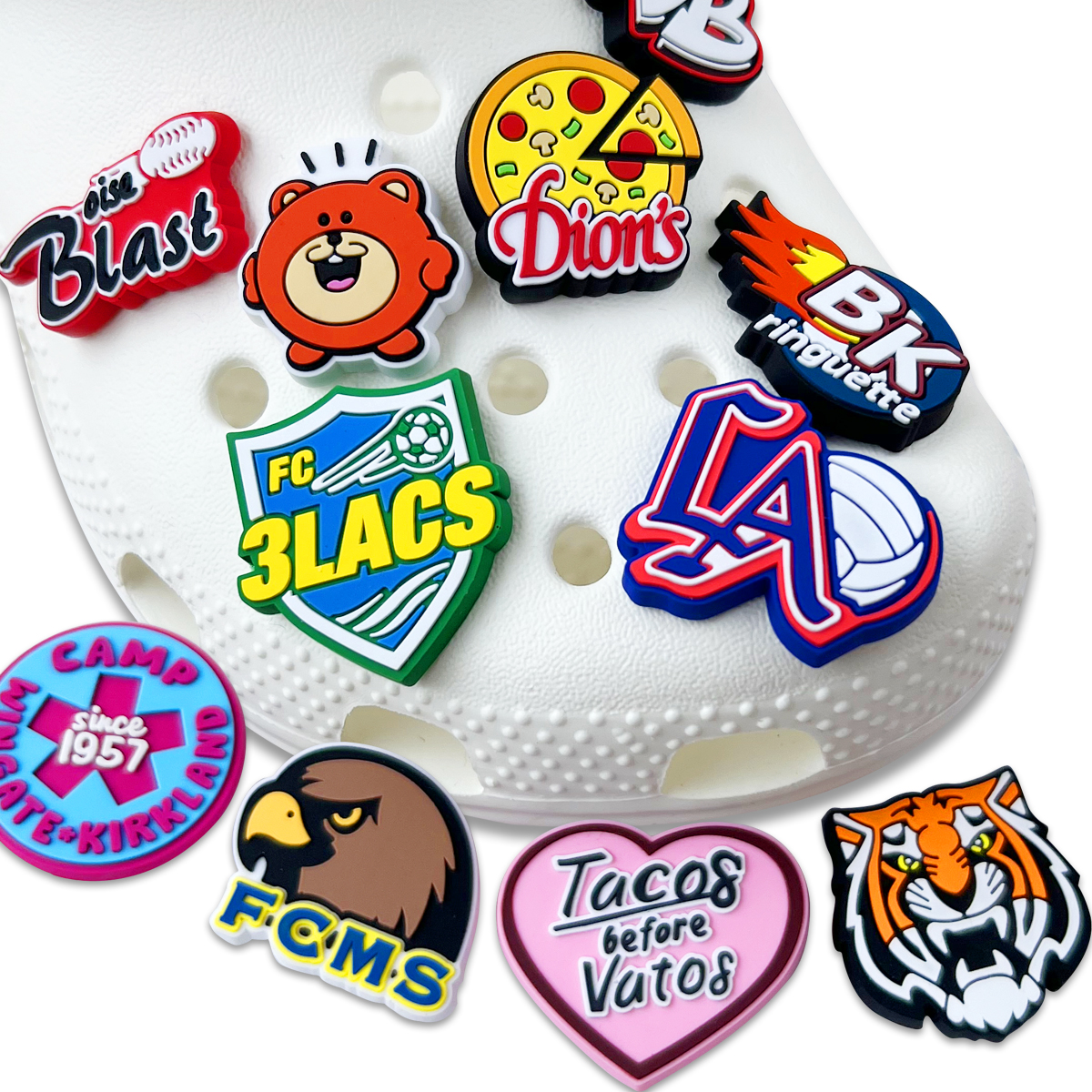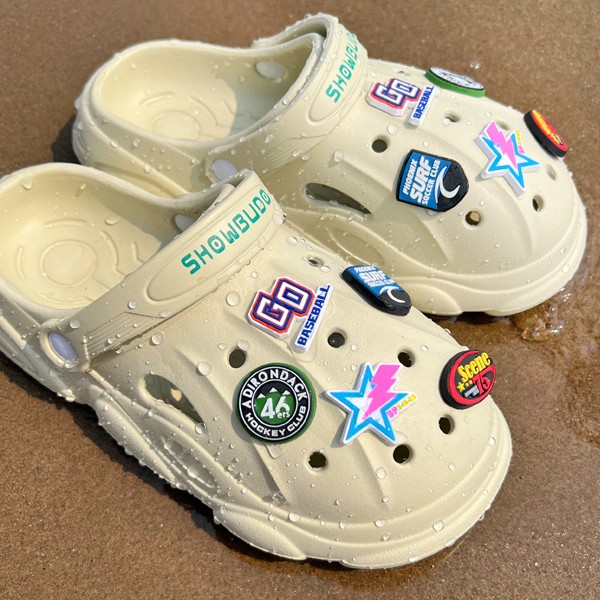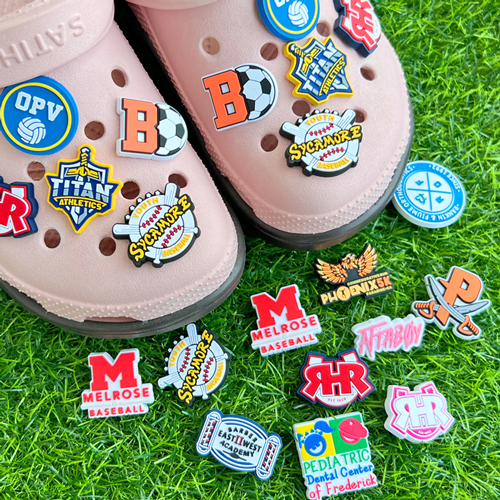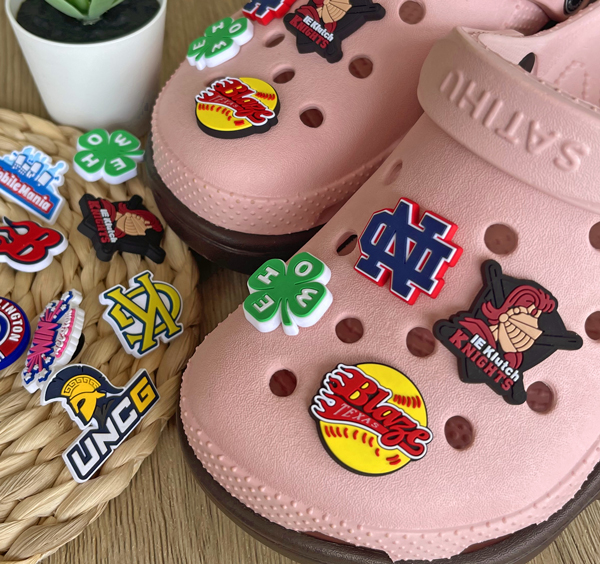
Table of Contents
does Crocs stretch? It’s a common worry, especially when you’re buying online and sizing feels like a guessing game. Crocs are known for that cushy, cloud-like feel, but nobody wants shoes that turn floppy after a few wears.
Some folks say, “Give 'em a week, they’ll mold to your feet.” Others toss them in the sun or hit them with a hairdryer to speed things up. Even Crocs themselves admit that heat can make their Croslite material more flexible.
This guide cuts the fluff and gets right to it—how Crocs stretch, how much give they’ve got, and what to do if yours feel too tight (or too loose). Let’s save you a return label and get you that perfect fit.
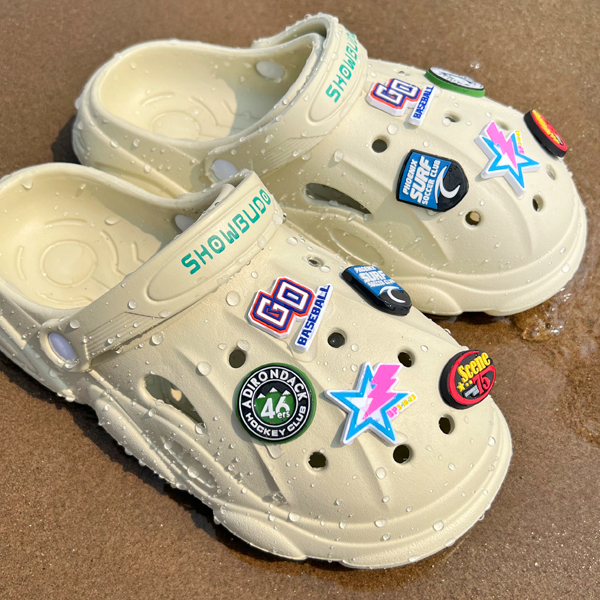
Crocs are known for comfort, but do they stretch the longer you wear them? Let’s explore how Crocs adapt over time through daily wear.
Crocs start out snug, but as you break them in, they’ll gradually loosen.
In the first 3–7 days, you may notice a slight give in the material, especially in warmer conditions.
Around 2–3 weeks, the footbed molds subtly to your foot, influenced by daily use, cleaning habits, and wear and tear.
Regular exposure to elements like water or heat may speed up this stretch, particularly for models using plastic or foam-like materials, not fabrics like linen or silk.
Crocs stretch differently depending on your foot shape and size.
If you’ve got wide feet or wear thick socks, expect quicker expansion in the toe box. People with small or medium-size feet may barely notice a difference, while those in extra-large sizes might experience a noticeable give. And if your feet are more “Fred Flintstone” than “Cinderella”? Yeah, you’ll break them in faster. Comfort levels vary, but the soft stretch fabric-like foam tends to adapt to your footwear routine within a week or so.
Crocs are stretchy, but don’t expect them to turn into slippers forever.
Their elasticity and shape retention depend on material properties—especially the type of foam used during the manufacturing process. Cheap knockoffs might lose structure after a month, but quality Crocs? They’re built for longevity.
“Croslite’s closed-cell resin composition gives it an edge in shape memory, even with repeated use,” says footwear designer Dana Liu, who’s consulted with major comfort shoe brands.
Don’t expect miracles, but with decent maintenance, your Crocs will hold their shape far longer than many woven fabrics or synthetic fibers in traditional shoes.
Here are safe, simple ways to stretch Crocs at home without wrecking your favorite pair.
Soaking Crocs in hot (not boiling) water softens their Croslite material, making it easier to stretch.
Submerge them for 30 seconds.
Put on thick socks and wear the Crocs as they cool.
Flex your feet to stretch problem areas.
This method works best for targeted tight spots and is great for daily-use wearers needing just a bit more room.
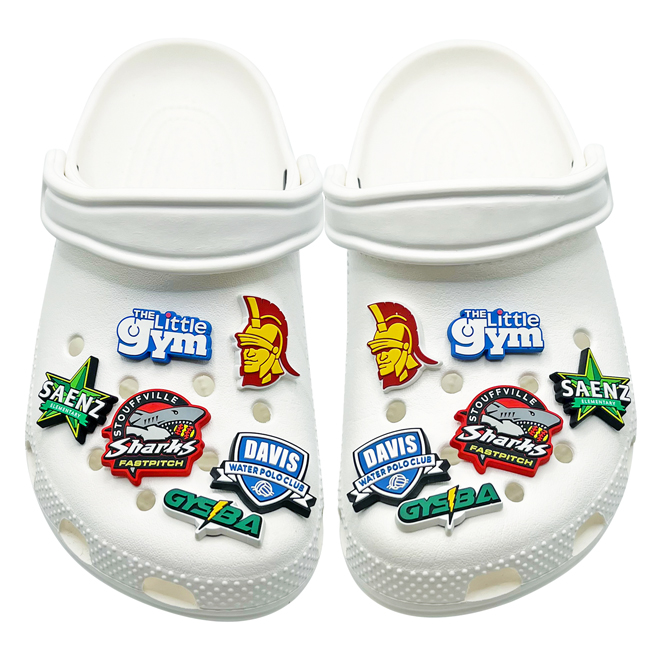
Wearing thick socks with your Crocs around the house is the chill, no-risk way to ease them in. This low-effort trick lets your feet naturally mold the material over time without any special tools. It's especially handy for folks with medium to large size feet or if your Crocs just feel a bit snug fresh out the box.
A shoe stretcher is perfect if you want more control. Choose a stretcher made for rubber or synthetic materials.
Use a two-way stretcher to expand both width and length.
Turn the knob slowly and leave it overnight.
Use sparingly to avoid over-expanding.
This method is ideal for those with specific fit issues, especially if your foot shape is more unique than standard sizing allows.
Crocs are durable, but not indestructible. Overheating or forceful stretching can warp the shape permanently. “Always test methods gradually,” says Lisa Morano, a footwear technician with 15+ years in product fitting. “Stretching isn’t a race—it’s about getting the right fit without ruining the shoe’s core structure.”
| Method | Max Time | Temp (°C) | Risk Level |
|---|---|---|---|
| Hot Water Soak | 30 seconds | 45–50°C | Low |
| Hairdryer Heat | 10–20 secs | ~60°C | Medium |
| Boiling Water Dip | 5–10 secs | 100°C | High |
Use your Crocs gently post-stretch to help the material re-set comfortably without losing its elasticity.
Curious how far you can push your Crocs? Let’s break down their stretch capacity—without going too far and ruining your favorite pair.
Crocs are made from Croslite, a closed-cell resin with limited elasticity. Most users notice a width increase of 3–5% after extended wear or heat-assisted stretching. That might sound small, but it's enough to improve comfort without distorting the overall shape. For example, a Crocs Classic with a top diameter of 9.5 cm may widen by 0.3–0.5 cm.
| Lamp Shade Size | Original Width (cm) | Stretched Width (cm) | % Increase |
|---|---|---|---|
| Small | 8.5 | 8.8–8.9 | ~4% |
| Medium | 9.5 | 9.8–10.0 | ~5% |
| Large | 10.5 | 10.8–11.0 | ~3% |
Pro tip: Focus on width, not length—Crocs rarely stretch much in length!
Let’s keep it real—yes, you can wreck your Crocs. Throwing them in boiling water or over-microwaving (don’t!) leads to heat-induced shrinkage or funky deformation. Stretch too far, and your Crocs lose that snug fit and squishy comfort.
Shoes that have lost their material elasticity get floppy, lose arch support, and may even crack around the base. Once that happens, there’s no bouncing back.
Crocs are made from different materials, and each behaves uniquely when it comes to stretching. Let’s break down how these materials really perform.
Croslite is the OG Crocs material—lightweight and snug. LiteRide? It's like the upgraded cousin—squishier, more flexible, and built for comfort. When it comes to stretch, LiteRide tends to give a little more, especially over time. Croslite is stiffer and holds its shape better but takes longer to "break in." Fun fact: LiteRide clogs are often chosen by runners and walkers for that bouncy footbed, while Croslite is still the go-to for classic clogs.
| Material | Flexibility Rating (1–10) | Durability (Months) | Stretch Tendency |
|---|---|---|---|
| Croslite | 5 | 24 | Low |
| LiteRide | 8 | 18 | Moderate |
Foam density affects how supportive or flexible your Crocs feel.
Higher density foam: More support, less stretch. Ideal for work clogs.
Lower density foam: More flexibility and comfort, but they stretch faster. If you’re on your feet all day, you might want denser foam. But for casual wear? Something softer may feel more “ahhhh” than “ouch.” These material properties also affect compression and cushioning over time, so your comfort level may change.
Water exposure changes the game. Crocs materials are water-resistant but not immune to shape change.
Croslite stays firm, dries fast, but can warp in high heat.
LiteRide is softer, dries slower, and may deform with repeated soaking. Tip: Avoid leaving Crocs in hot cars or soaking in boiling water unless you're intentionally stretching them.
“When I left my Crocs on the porch for two hours in summer, they were not the same after that,” says Andrew Lopez, a landscape designer from Phoenix. “The soles softened, the fit loosened, and honestly, they felt molded to my feet after cooling down. That was the moment I realized heat reshapes these shoes.”
Exposure to heat, whether from sunlight, warm water, a hair dryer, or even mistakenly placing Crocs near the oven, can trigger changes in their signature Croslite material. Known for being lightweight and cushioning, Croslite is also sensitive—meaning it stretches, shrinks, or even deforms under certain thermal conditions.
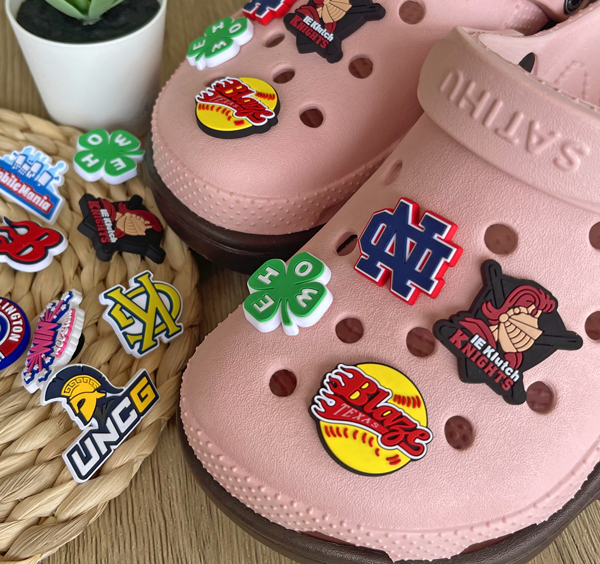
Common heat-related effects on Crocs:
Sunlight: Long hours outside can warp shape and widen the fit.
Warm water or hot baths: Used purposefully, they soften Crocs for controlled stretching.
Hair dryers and boiling water: Often used in DIY techniques to mold Crocs to personal foot shape.
Oven accidents: Can result in irreversible shrinking or melting—this is not recommended.
Dr. Lisa Chen, a podiatrist at Evergreen Orthopedics, notes, “Excessive stretching under heat can cause misalignment in arch support and heel structure, reducing the ergonomic benefit that makes Crocs popular among professionals.”
While some TikTok hacks promote stretching Crocs with heat for comfort, manufacturers advise caution. According to Crocs’ official care guide, “Do not expose footwear to extreme heat or intense sunlight for extended periods.”
Products that retain their form after controlled heating typically use high-quality materials. Authentic Crocs, unlike cheaper alternatives, demonstrate controlled reshaping under mild warmth, offering both comfort and fit without degrading performance.
When heat is used with care, it becomes a useful tool—not a risk.
If you're wondering how stretching affects Crocs sizing, you're in the right place. This guide answers whether to size up or down and how to buy wisely.
Crocs typically run true to size, but since they do stretch a bit over time, some people wonder if they should size down. Here’s the deal:
For snug lovers: size down only if you don’t plan to stretch them.
For wide-footed folks or those who wear socks: stick to your usual size.
Always check the Crocs sizing chart and try them on when possible.
New Crocs can feel a bit stiff out of the box, but once you break them in, the fit loosens slightly, especially with heat or regular wear. Expect:
Slight stretching in width
Improved comfort after a few days
No major change in length, just more give in the material Remember, they’re designed to mold to your feet without losing shape.
Got wide feet? No stress — Crocs got your back.
Classic Crocs clogs are naturally roomy and work well for wider feet.
Avoid slim-fit models like Crocs LiteRide or Baya unless labeled as relaxed fit.
Try them with socks to see how your feet feel before deciding on size.
“Crocs are a godsend for wide-foot comfort,” says footwear specialist Jenna Lau. “But don’t assume all models are built the same.”
Buying secondhand Crocs can save cash, but there are a few things to look out for:
| Condition | Stretch Level | Recommended Action |
|---|---|---|
| Like New | Minimal | True to size okay |
| Worn | Moderate | Try one size down |
| Loose | High | Avoid or repurpose |
Check the fit, price, and resale condition before pulling the trigger. Sometimes, it’s not worth it unless you’re cool with a looser fit or just wearing them around the house.
Stretching your Crocs changes how they fit—but does it mess with comfort? Let’s break down what really happens after you break them in.
Stretching your Crocs doesn’t automatically mean your feet lose that cloud-like feel—but it can affect the foam padding and air cushioning in subtle ways. Most Classic Crocs use Croslite, which holds up decently under pressure, but once stretched too far, memory foam-style support may start to feel a bit thin, especially around the heel zone.
If you're noticing less bounce underfoot, try slipping in gel inserts or custom cushioning materials to bring back that pillowy feel. Stretch 'em, sure—but don’t kill the comfort.
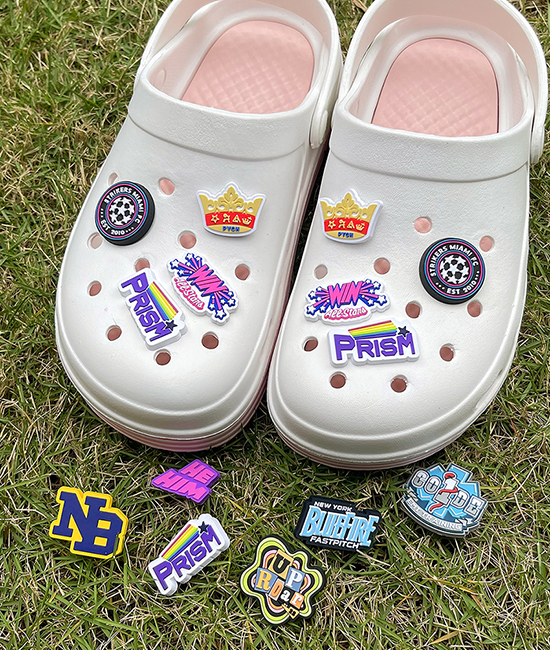
Heel counter breakdown – Once Crocs are stretched, the soft heel area may start losing structure. It’s no big deal for casual wear, but not ideal if you’re walking all day.
Arch support resilience – Crocs are built with minimal but strategic arch support. Overstretching may flatten this curve, which can affect foot health, especially if you deal with pronation or supination.
Fixes and reinforcements – If support goes south, toss in some orthotic insoles. They’re cheap, easy, and give your Crocs a second life—especially if you're using them for more than lounging.
Crocs are like your favorite pair of jeans—tight at first, but give ‘em a little time (or heat), and they loosen up just right. Just don’t go overboard trying to stretch them, or you'll end up with floppy shoes and sore feet. Smart sizing + a little patience = the sweet spot.
No, not all Crocs models stretch equally. Classic Crocs made from Croslite material tend to mold slightly to your foot but don’t stretch dramatically. Newer models like LiteRide or off-road variants have different compositions and may feel firmer, offering less stretch over time.
Usually within a few days to a week of regular wear, users start noticing a subtle difference in the fit. This varies based on foot shape, usage frequency, and temperature.
Use a low-heat setting for no more than 2–3 minutes
Wear thick socks and put Crocs on immediately after heating
Never leave Crocs unattended in the dryer
Avoid frequent use of heat to prevent material breakdown
Crocs are generally wide-friendly and do stretch slightly over time. However, if you have very wide feet, it's still better to size up or choose models that specifically advertise a roomier fit.
Yes, it's a common DIY method. Submerge the Crocs in warm (not boiling) water for about a minute. Then, wear them with thick socks until they cool and conform to your foot. It’s one of the safest stretching methods.
They can become floppy and lose their secure fit. Overstretching may also reduce arch and heel support, leading to less comfort during wear. Always stretch gradually and check the fit frequently.
Wearing them barefoot may lead to minimal stretch due to body heat and pressure. For noticeable stretching, wearing thick socks or using heat accelerates the process more effectively.
Toes press firmly against the front
Tightness around the top or sides of the foot
Redness or irritation after short wear
Difficulty slipping them on and off
In most cases, yes—especially if the stretching is gradual. However, excessive stretching or improper heat use can compromise structure and reduce overall support.
